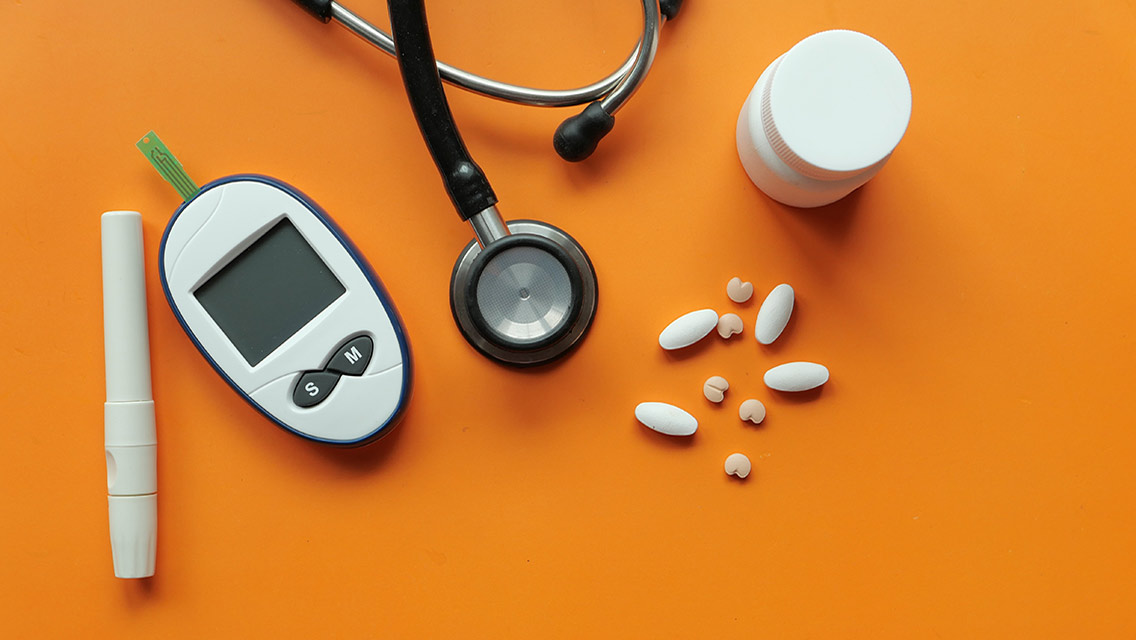Against my better judgment a few years back, I scheduled an appointment at a functional-medicine clinic that had recently opened for business in a nearby suburb. I figured I could get a glimpse at how a “holistic” practice differed from my conventional clinic while also learning how well my aging body was holding up.
My blood pressure was through the roof, which did not surprise me (white-coat syndrome), and lab reports turned up troublesome serum-cholesterol levels, which were also not unexpected. What did have me scratching my head was the doctor’s terse diagnosis of something called prediabetes, based on some number attached to my blood sugar.
I declined the statin prescription he offered to lower my cholesterol, opting instead for some nutritional supplement and a 28-day elimination diet, and drove back home musing about how I might handle the creeping onslaught of blindness, amputations, and whatever else type 2 diabetes might deliver in the not-so-distant future.
What I didn’t know then was how a PR flack at the American Diabetes Association (ADA) in 2001 had hoodwinked the healthcare industry — and, by extension, millions of geezers like me — into believing we were destined to develop the disquieting disease unless we took some pills or made some major lifestyle changes.
All it took was a simple rebranding of a relatively benign, but nerdy-sounding, condition — impaired glucose tolerance — for the ADA to create an entirely new health threat, one that now troubles some 88 million Americans, including more than 24 million seniors, and promises a bonanza for Big Pharma, which has been working feverishly to develop a drug to address the condition. As Charles Piller reports in the journal Science, the ADA flack convinced the organization’s chief medical officer, Richard Kahn, MD, to convene a panel of experts to come up with a moniker that would scare patients enough to take action when their blood-sugar levels drifted into a nebulous territory below the diabetes threshold.
And, while the World Health Organization and international diabetes experts rejected what one U.K. researcher called the ADA’s “scaremongering,” the Centers for Disease Control and Prevention (CDC) quickly fell into line, and physicians across the country began to treat prediabetes as an alarming precursor to type 2 diabetes. And, despite numerous studies debunking the risk — especially for the elderly — the charade continues.
Susan Glickman Weinberg’s hemoglobin A1C results were well below the threshold defining type 2 diabetes when she was diagnosed with prediabetes at 65, but her doctor recommended that she start taking metformin. “The thought that maybe I’d get diabetes was very upsetting,” Weinberg tells Paula Span in the New York Times. “There were a lot of unknowns.”
Recent research, however, aims to fill in some of the blanks and perhaps rescue Weinberg and the rest of us geezers from the prediabetes scam. Johns Hopkins epidemiologist Elizabeth Selvin, PhD, and her colleagues tracked more than 3,400 adults with an average age of 76 whose blood-sugar levels placed them squarely in the prediabetes camp and found six years later that fewer than 10 percent of the group developed diabetes. The results, reported in JAMA Internal Medicine, found that more than half saw their blood-sugar levels fall back into the normal range.
It’s not clear whether those study participants had embarked on a lifestyle or pharmaceutical regimen that led to these salutary results, but Selvin’s pretty emphatic about the needlessness of the prediabetes diagnosis. “We’re not seeing much risk in these individuals,” she concludes. “Older adults can have complex health issues. Those that impair quality of life should be the focus, not mildly elevated blood glucose.”
And the ADA is actually paying attention. Earlier studies had caused the organization to rethink its 2001 rebranding efforts (“Nobody really thought at the time, How ‘pre’ is prediabetes for all these people?’” says Kahn, who left his position in 2009), and Selvin’s research will now be reviewed by its Professional Practice Committee.
“It could lead to some adjustments in the way we think about things,” chief scientific and medical officer Robert Gabbay, MD, PhD, tells Span. For older people especially, “their risk may be smaller than we thought.”
Still, Gabby argues that a prediabetes diagnosis — as specious as it may be — is sometimes what’s needed to convince a patient to get off the couch, eat a healthier diet, and make other lifestyle changes. “I’ve had a number of patients diagnosed with prediabetes, and it’s what motivates them to change,” he notes. “They know what they should be doing, but they need something to kick them into gear.”
Nobody’s going to deny the benefits of a healthy lifestyle at any age; encouragement of that pursuit may be particularly helpful for a middle-aged patient who seems to be on track to develop type 2 diabetes in 15 to 20 years. But folks my age and older are not likely to live long enough to face the disease. Besides, most of us have more pressing health concerns — and little tolerance for baseless threats. “It’s unprofessional to mislead people, to motivate them by fear of something that’s not actually true,” says geriatrician Kenneth Lam, MD. “We’re all tired of having things to be afraid of.”
Weinberg declined her doctor’s prescription, but she consulted a nutritionist to improve her diet and began walking more often. Within 18 months, her A1C levels had fallen below the threshold for prediabetes.
I have no idea where my A1C levels currently fall on the prediabetes-diabetes spectrum, nor do I have any interest in finding out. I never returned to that suburban clinic or the doctor who delivered the diagnosis. It’s not that I’m uninterested in how my aging body is operating at any given moment; I’m doing my best to treat it right. I just happen to be slightly allergic to fear-based medicine.
Which reminds me that I’ve been meaning to check out a nearby community acupuncture clinic. My qi could probably use a little tune-up, and I’ve never been the least bit afraid of those tiny needles.





This Post Has 0 Comments